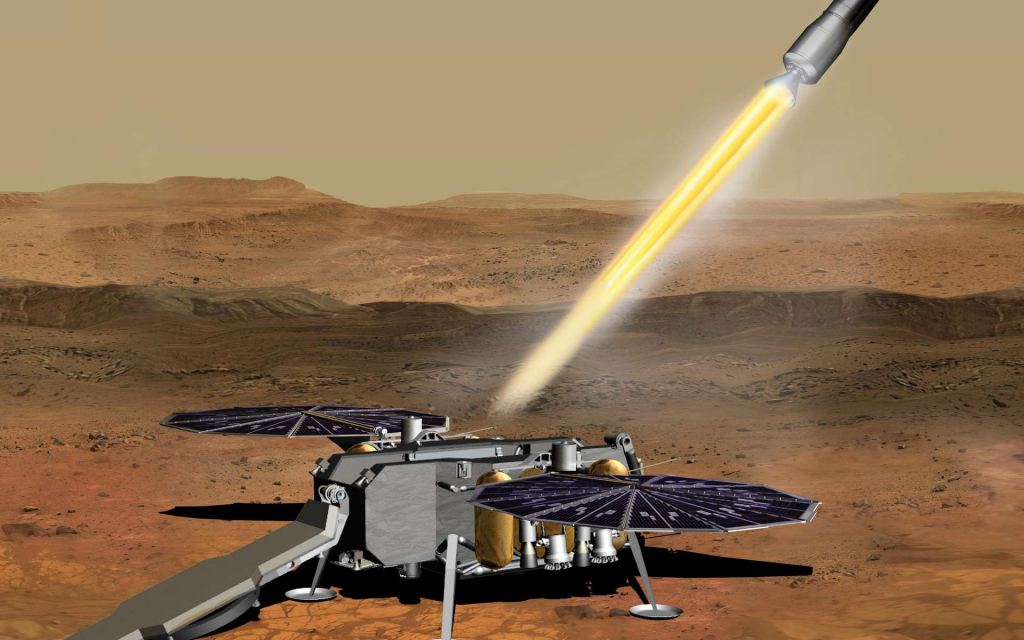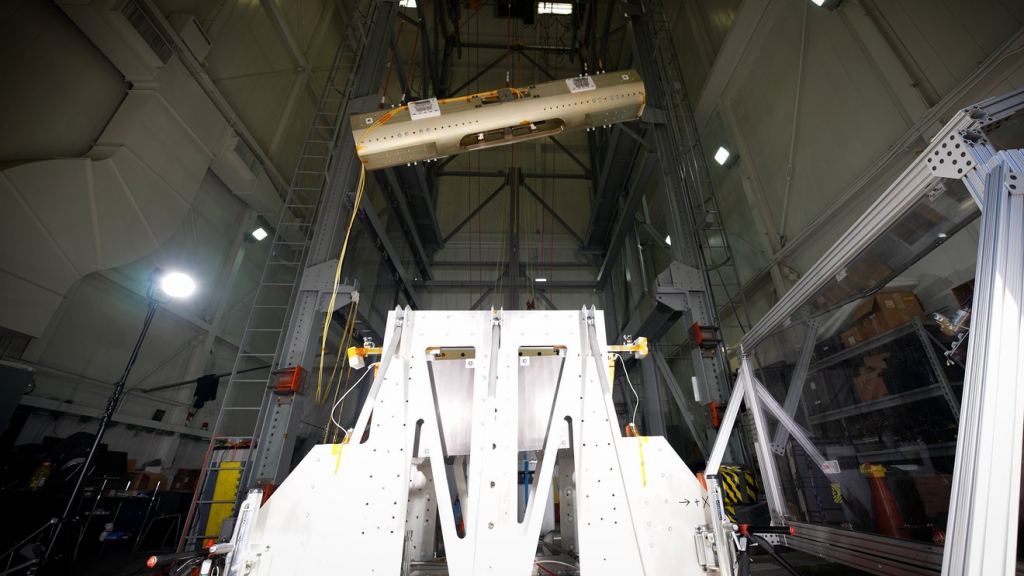Testing is key to the success of any space mission, and the more complex the mission, the more testing is required to complete it successfully. The Mars Sample Return (MSR) mission is one of the most ambitious missions ever undertaken. It started with the Perseverance rover, which is currently exploring Jezero crater while occasionally stopping to fill sample bottles with interesting material. But the more impressive engineering feat is what happens next. NASA plans to launch a combination lander, rover, and ascent rocket that will land on the Martian surface, pick up the sample containers Perseverance has left behind, sterilize them, launch them back into space, and then return them to Earth.
That’s enough new achievements to make any engineer nervous, and when engineers get nervous, they tend to test things. In the case of MSR, the testing has already started. There are two main steps that the testing is currently focusing on: the landing and the beginning of the rocket ascent.
NASA video detailing the testing its engineers are doing on the MSR mission.Credit – NASA-JPL YouTube Channel
Taking enough equipment and fuel to launch a rocket of another planet for the time requires a lot of weight, so MSR will be the heaviest object landed on Mars. Various techniques for that difficult landing have been used over the years, but MSR will use the tried-and-true method of retro rockets for its final landing descent.
Unfortunately, there are plenty of problems that can happen when touching down, including rocks in the way, soft sand, or a strange landing angle. NASA engineers working on the lander have designed it with legs that can handle many of those hazards, but they need to be thoroughly tested before being deployed. Testing is currently ongoing by dropping a 1/3 scale model of the lander at various angles onto various types of ground.
 Artist’s conception of the MSR mission rocket taking off from the surface of the red planet.
Artist’s conception of the MSR mission rocket taking off from the surface of the red planet.
Credit – NASA / JPL-Caltech
Utilizing high-speed cameras, they track how the lander the various drops it is subjected to and update computer models to reflect what happened in their testbed. The more unique test scenarios they can capture in the lab, the more likely the lander will have experienced it before. As testing progresses, it will eventually scale up to a full-size lander system to see how the real thing would respond.
The lander’s landing position is critical because it will have to launch a rocket up into the air. Early in the mission design, the team decided that it would be better to throw the rocket up in the air. That rocket, known as the Mars Ascent Vehicle, will take the samples back to orbit, eventually transferring to Earth via another rocket system sitting in orbit around Mars.
 The MSR lander tosses a mock rocket into the air, which is then suspended by a crane. This toss will be critical to the success of MSR’s mission, as it will allow the samples to be returned back to an orbiter, and thence to Earth.
The MSR lander tosses a mock rocket into the air, which is then suspended by a crane. This toss will be critical to the success of MSR’s mission, as it will allow the samples to be returned back to an orbiter, and thence to Earth.
Credit – NASA / JPL-Caltech
Testing for that ejection mechanism is also ongoing, with engineers at JPL throwing a 400 kg (881 lb) fake rocket 3.3 meters (11 ft) up in the air at an angle. To do this, the lander utilizes a piston system, but on Earth, it also gets help from a crane designed to mimic Martian gravity by offloading more than half the rocket’s weight. The crane is also conveniently placed to entirely suspend the rocket at the end of the test so that it doesn’t fall back down, crushing the test lander.
Even still, testing the Vertically Ejected Controlled Tip-off Release (VECTOR) system is dangerous, and everyone performing the testing does so from outside the building. Data collected from the tests will help compensate for different potential landing orientations of the lander itself and the modeling of the stressors the lander itself must be designed to withstand during the rocket’s ascent.
Typically these tests are performed in stages, which is also the case for most of MSR’s tests. In addition to eventually testing a fully sized lander, engineers will attempt to throw a larger rocket even further into the air later this year. There’s still a long way to go before the most complex Martian mission ever untaken is completed, but the process has already started.
Learn More:
NASA – NASA Begins Testing Robotics to Bring First Samples Back From Mars
AZoRobotics – NASA has Begun Testing Robotics for Mars Sample Return Mission
Science Times – Mars Sample Return Mission: NASA Begun Testing Robots That Will Collect Martian Rocks in Search of Life in the Red Planet
UT – Plans for a Mars Sample Return Mission Have Moved to the Next Stage
Lead Image:
MSR’s lander undergoing drop testing at a NASA facility
Credit – NASA / JPL-Caltech

